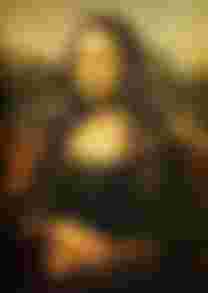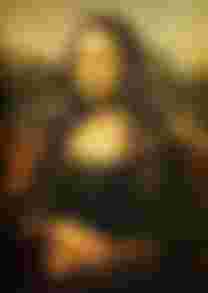Leonardo da Vinci
Leonardo da Vinci (Italian: Leonardo da Vinci; 15 April 1452 - 2 May 1519) was an Italian Renaissance architect, musician, inventor, engineer, sculptor and painter. He was described as the ideal of the "Renaissance man" and as a universal genius. He is known for his masterpieces, such as The Last Supper and Mona Lisa, and his inventions are used today in modern technology, although they were not used in his time. He helped develop anatomy, astronomy, and civil engineering.
His paintings are extremely rare and precious today, and although they are often unfinished, they are considered the supreme works of this "universal genius" as they often called him. He was fascinated by the mystery of the human face and the ability to read “soul movements” through facial movements and expressions. Leonardo's portrait of the wife of the Florentine official of that time, "Mona Lisa", is widely known for the enigmatic expression on the face of the portrayed lady. The portrait "Mona Lisa" is the first psychological portrait painted in history and that is why so much importance is given to this work. Leonardo was born near the city of Vinci in Tuscany in 1452, and he studied painting and sculpture near Veroki, Italy. He moved to various cities in Italy several times - wherever his business took him. Towards the end of his life he lived in Rome, and then in 1517 he was invited to paint a castle in Paris at the invitation of the French king. He died in Paris in 1519.
Childhood
Leonardo Da Vinci was born during the Renaissance, on April 15, 1452, in a country house, 3 km away from Vinci. His father was a lawyer and did not marry Leonard's mother, probably because she was the daughter of a farmer. The only reliable information about her is that her name was Katarina. Leonardo was baptized by the parish priest Piero da Bartolomeo, but with the name Lionardi and not Leonardo. At the age of less than five, he moved in with his father and stepmother. Piero and his first wife did not have children, so it is possible that Leonardo was accepted into his father's family because of that.
Leonardo went to school in Vinci. Young Leonard's teachers were taken aback by his questions and thoughts. At school, he learned to read, write and count. He also studied geometry and Latin. He later perfected his knowledge of Latin, because he felt that he had not learned enough in school. At the age of 14, he moved to Florence, where he apprenticed in a workshop.
Training in Florence
Leonardo began working for Verocchio in 1466. Andrea del Verocchio was a leading Florentine sculptor and painter. Verrocchio was delighted with the drawings of the young Leonardo and received him in his workshop, where da Vinci began working with many famous artists - Botticelli, Perugini, di Credi. In June 1472, Leonardo became a member of the painting guild, ending his apprenticeship. In the book enrolled in the guild, da Vinci is listed under the name Lionardo.
Leonardo's first known work is a drawing of Arnovale in ink, made on August 5, 1473. It shows Leonardo's talent, because he realistically painted a landscape, which no one had done before.
In 1476, Leonardo and Verrocchio commissioned a painting of Christ's baptism. Leonardo painted the front angel and the landscape. The difference between these two artists can be seen in the creation of angels.
Scientific work
In 1482, Leonardo moved to Milan to work as a civil and military engineer for the "Duke", and the job of painter and sculptor became a secondary occupation. Leonardo also worked as a designer and director of court festivals. Here he began his first systematic scientific studies based on practical experiences in anatomy, botany, mathematics, physics and mechanics. In 1499 Leonardo returned to Florence. The following year he entered the service of the French king, remaining in it until 1506, after which he returned to Florence until 1507. From Florence he continued his journey to Milan where he would live for the next five years. From 1516 until his death he lived in France with his student and successor Francesco Melzi (1491-1568).
Leonardo is the most famous intellectual of the Renaissance period, thanks to many interests: from military architecture, through anatomy, geometry, astronomy, construction, hydraulics, physics to general technology.
Although his patrons engaged him in various jobs during his life - from planning fortifications, castles and canals, to creating ball gowns - he has remained known to this day as one of the most important painters.
Da Vinci drew all his life, he made sketches and drawings, in ink or pencil. 4,000 of his drawings, often small in size, have been preserved. Leonardo wrote in narrow lines, written as a reflection in a mirror, from right to left. Next to them are drawings of plants and diagrams of gears and wheels. Entire pages are dedicated to weapons, spears, maces, swords of exotic shape. Then there are sketches for making fortifications and schemes of artillery weapons, drawings of flying machines, tanks, diving equipment and other fantastic things, centuries before they were made.
He even designed a robot, which could sit, wave its arms and move its head as it opened and closed its anatomically faithful jaw. "I can make cannons, small arms, useful and very beautiful shapes, different from the one used. wrote the artist.
Da Vinci also drew various animals: dogs, cats, bears, horses, and even a dragon. Not knowing the details of the anatomy, except the ones he could see with the naked eye, he drew the "Tree of Veins" on which he showed the position of the heart, lungs and main arteries in the human body.

Art
Bahus
Although Leonardo created a relatively small number of paintings (many of which are unfinished), he is still one of the most influential and innovative artists of the Renaissance. In his early period, the painting direction he followed did not differ much from the style of his teachers, so that as he matured, Da Vinci skillfully rejected the rigid way of treating figures and objects, and practically revived them, using his widely popular sfumato technique.
In his work Adoration of the Sages, he uses a new compositional approach - the central figure is in front and everything is subordinated to it, while the other figures and objects in the background are grouped so as to emphasize the central figure even more. His stylistic innovations are even more noticeable in The Last Supper, where he presented one established theme in a totally different way. Instead of presenting the 12 apostles as individual figures, he groups them into groups, which surround Christ as the central figure. All the way back, the landscape is shown through the window. Da Vinci portrays the apostles and Christ at the moment when Christ announces the betrayal, and in an almost realistic way he shows the various emotions of the apostles, astonished by this news.
The Mona Lisa, Leonardo's most famous work, is equally known for the innovations it uses in painting technique, as well as for the mysterious smile of the subject that Leonardo depicts. This work is a cohesion of two techniques that he established -
Chiaroscuro and Sfumato.
Da Vinci influenced almost all later artists of the High Renaissance, and above all Raphael. He completely changed the Milan school, and he also influenced the schools in Parma, Florence and other Renaissance centers.

The most famous painting in the world ... I think ??